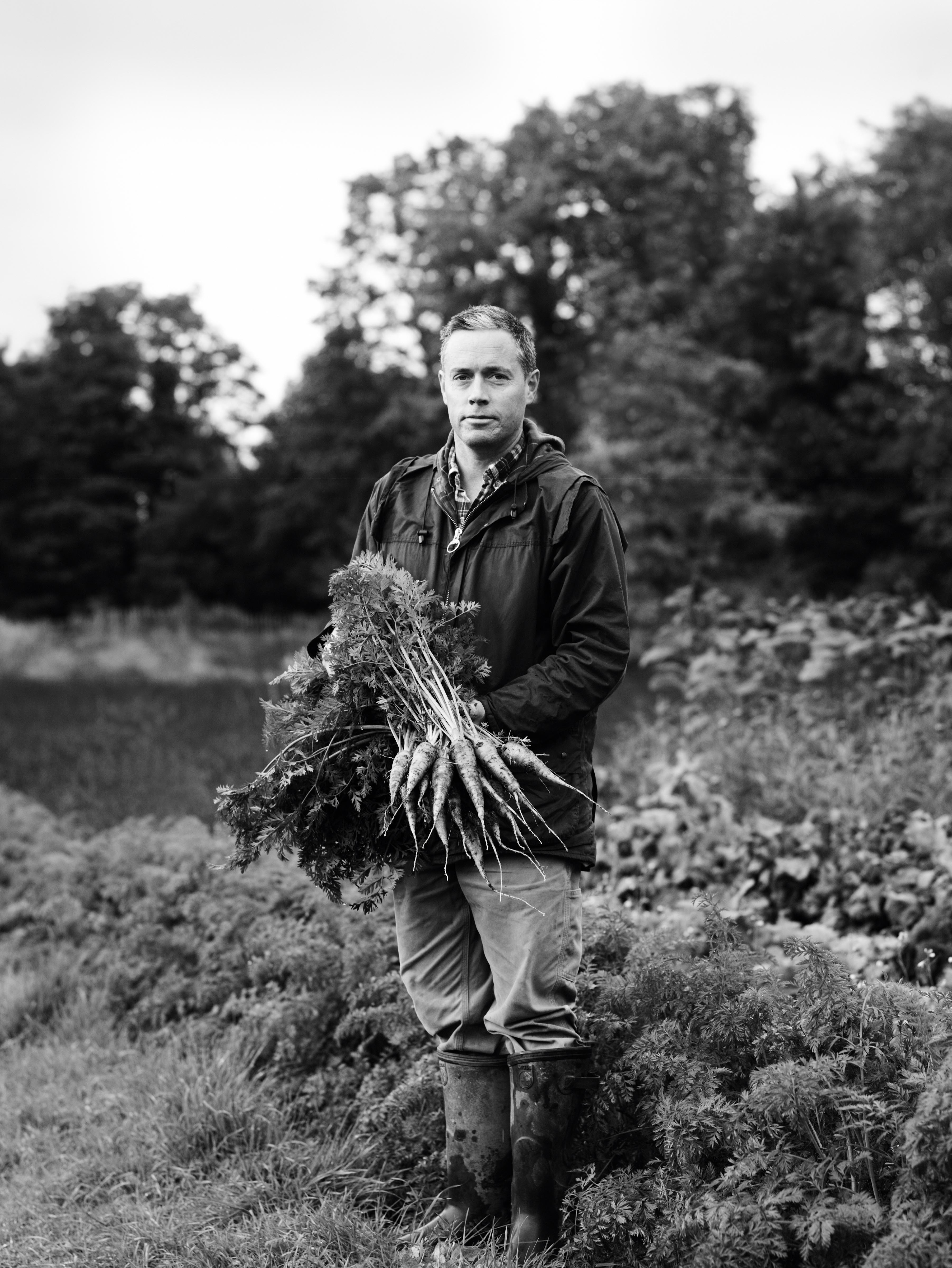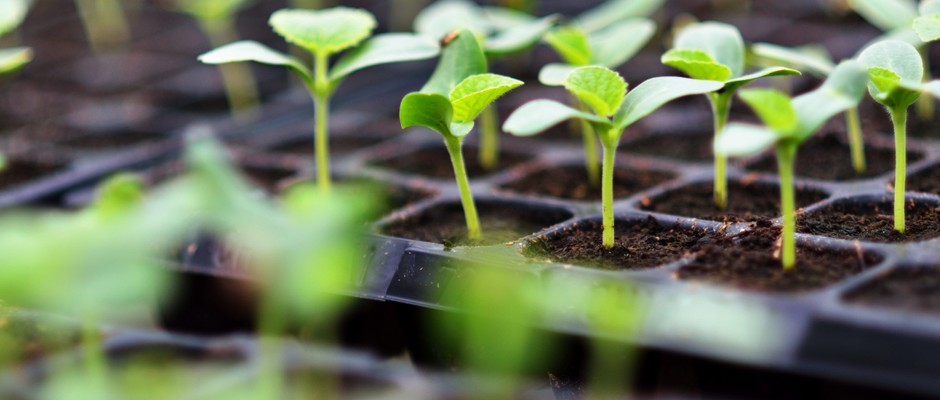
Planting seeds: everything you need to know about sowing seeds
Daunted by sowing seeds? Propagation expert Carol Klein and vegetable grower Aaron Bertelsen share their seed sowing tips.
Growing new plants from seed is a magical process, and it is an economical way of growing, too – one packet of seeds will give you masses of plants, plus some to spare for family, friends and neighbours.
But sowing seeds can be daunting. Here, plant propagation expert Carol Klein and veg grower Aaron Bertelsen give us their seed sowing tips.
Jump to:
- Is indoors or outdoors best?
- Seed trays or small pots?
- The best compost for seed sowing
- Is a heated propagator necessary?
- How to water seeds
- How to sow seeds
Sowing seeds: is indoors or outdoors best?
Carol Klein: Most of my seed sowing is done under cover. There is greater control and higher success rates when seed is sown under glass. A cold frame can be used but a greenhouse is more versatile as it also provides the ideal environment for starting off half hardy annuals and tender perennials.
Aaron Bertelsen: Clay soil holds on to a lot of water and is slow to warm up in the spring. This is one of the reasons why I do most of my seed sowing under glass. It also give you greater control over the ultimate spacing of the plants – which is important, if you are a control freak like me – and there is less waste of seed.
Read our interview with no-dig guru Charles Dowding, who also sows his seeds under cover.
Seed sowing kit
Seed trays or small pots?
Carol Klein: I use the same seed trays year after year, washing them and drying them before filling them loosely to the brim with seed compost. I almost invariably use half seed trays as they are strong, stable and manageable. They have a big enough surface area to give a good number of seedlings a sound start and are deep enough to allow development of a strong root system.
It is preferable to plant large seeds in individual modules where they can grow on without competition and without unnecessary root disturbance. Fill and level a divided tray, then drop it sharply onto the work bench to settle the compost.
Aaron Bertelsen: I sow most crops with larger seeds straight into 7.5cm pots.
Which compost is best for seed sowing?
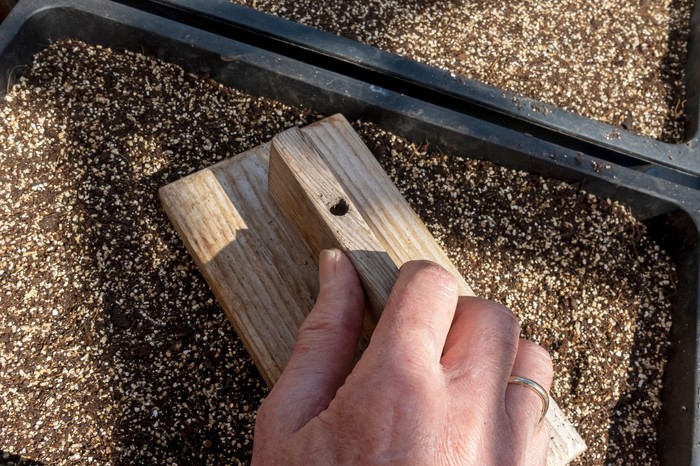
Carol Klein: There are different peat-free seed composts on the market, specially formulated to give seedlings a head start, but seeds will germinate fairly freely in most composts.
When my seed trays are half filled I flatten and slightly compact the compost using a presser board. This is a simple rectangle of plywood with a dowel handle on one side.
Aaron Bertelsen: Tamp the compost down by tapping the pot firmly against a hard surface, or lightly pressing it with your hand. You just need enough pressure to get rid of any air holes and make sure the compost doesn’t sink too much when you first water the pot, leaving the seeds exposed.
Is a heated propagator necessary?
A heated propagator can be useful if you are sowing early in the season – some seeds need higher temperatures to germinate, and some, such as chillies and tomatoes, need a long growing season, so need to be started off when the weather is still cold. However if you sow later in spring, a greenhouse or even a sunny windowsill will be sufficient.
Read our guide to the best heated propagators.
How to water seeds without them washing away?
It is best to wet the seed compost before you sow your seeds.
Carol Klein: Initially, rather than watering from overhead, which can wash away seeds, stand trays in a washing up bowl in shallow water. When the grit top dressing becomes damp, they can be taken out and drained.
Aaron Bertelsen: If using small pots, water the compost and allow that water to percolate through before sowing. This is a good technique to use with bean, sweet pea, courgette and pumpkin seeds, which may rot if they sit in too much water.
How to sow seeds
How deep to sow seeds?
Carol Klein: I surface sow everything except large seeds that need to be sown individually, and press them down into the compost. Many bigger seeds, like sweet peas, lupins and sunflowers, are attractive to mice and hiding them is a partial deterrent to full scale theft.
In every case I cover seeds with a fine, even sprinkling of horticultural grit. This replicates the sorts of conditions seeds would experience naturally, allowing light and warmth to get to work on the seed coat and providing the emerging seedlings with sharp drainage. It also retains moisture under the surface where it is most needed.
How to sow large seeds

Large seeds include lupins, sunflowers, beans and sweet peas. Some people prefer to start with these, as they are easier to sow.
Carol Klein: Push one or two seeds into each module and cover the surface with a thin layer of grit.
Sowing small seeds
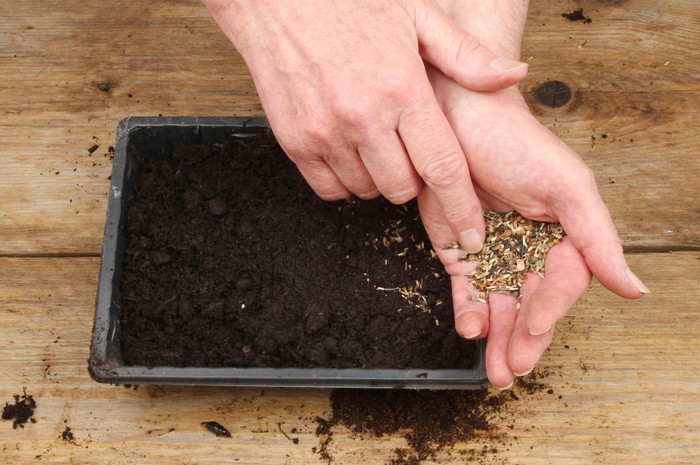
Sowing finer seeds such as poppies can be daunting, as it is harder to control how many you sow. It is important not to sow them to thickly - you'll get too many seedlings, and increase the risk of fungal disease.
Carol Klein: Separate a pinch or two of seeds on to your palm or saucer prior to sowing (remembering that each seed should have room to grow and develop its first leaves).
Like everyone else I know who sows seeds, I'm always tempted to sow them too thickly. This almost always results in damping off - a fungal infection that causes healthy looking seedlings to keel over.
Sow the seeds as evenly as possible over the surface of the compost. Start with a fine sprinkle of seed around the edge, then work backwards and forwards across the centre of the tray.
How long do seeds take to germinate?
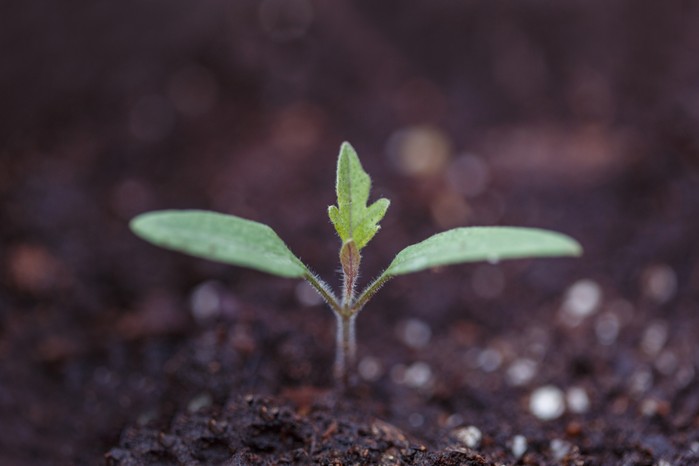
Seeds can take anything from a few days to several months to germinate, depending on the type of seed. Salad leaves including rocket, for example, germinates quickly. The germination time should be shown on the packet.
You will know that seeds have germinated because one or two leaves, called cotyledons, will emerge from the soil. They are part of the seed's embryo and provide nutrients to the seed until its 'true' leaves appear. You can tell cotyledons and true leaves apart easily, as the true leaves look like the typical leaves on the plant.
If you have grown your seeds in a heated propagator, remove them as soon as they have germinated and grow on in a warm, bright position such as a greenhouse or sunny windowsill.
Pricking out seedlings
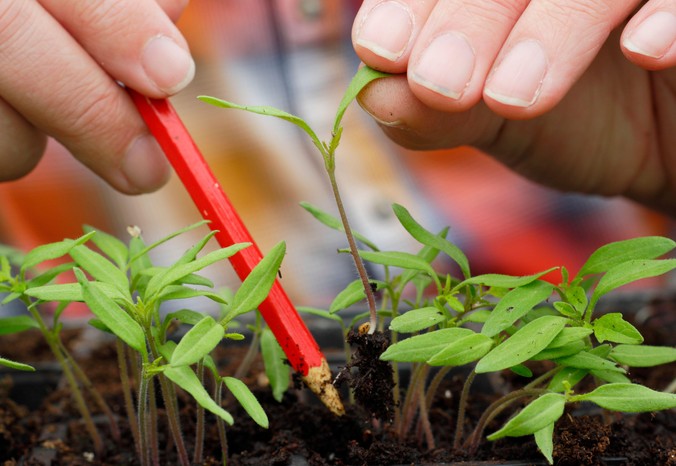
'Pricking out’ means separating out seedlings once they have developed their first pair of true leaves, and transferring them into their own plugs, modules or pots.
Carol Klein: When seedlings have developed their first true leaves they should be pricked out promptly.
Bang the seed tray on the bench to loosen the compost and separate it from the seed tray or pot. If the roots are extensive, each seedling should be pulled away gently by the cotyledon leaves. Once a seedling has developed true leaves, the cotyledon leaves are expendable.
More like this
Never pull up seedlings by their stems, which are very fragile at this stage. Very young, well-spaced seedlings can be gently lifted from the compost using a sharp stick (I use a wooden chopstick) - avoid prodding around clumsily, which can break fine, new roots.
Planting each seedling into an individual cell or module where it can grow and develop. When the time comes for its transference into a bigger pot or the open ground, the swap over can be made with the minimum of root disturbance. After pricking out, seedlings need a warm, bright position in which to grow on.
After a few weeks, each seedling will need transferring into its own small pot.
Hardening off young plants
When seedlings are well established in their own pots they should be introduced gradually to the outside over a week or so - a process known as hardening off. Put the pots outside during the day, but bring them back inside at night.
Sowing seeds outdoors

Sowing veg crops outdoors
Aaron Bertelsen: Many veg crops can be sown direct outdoors, but I tend to use this technique mainly for vegetables such as carrots and parsnips that have a tap root, and don’t like to be disturbed. It can work well, but do make sure the soil is warm enough before you sow: if it is too cold, at best the seeds will take longer to germinate and at worst they will just sit there and rot. You can use horticultural fleece both to warm the soil before sowing, and then to protect the newly sown area afterwards.
- Prepare the soil well, digging it over thoroughly and removing any stones and lumps that might prevent the emerging seedlings from pushing through – the phrase that is often used is ‘a fine tilth’. In practice this means that the texture of the soil should be rather like fine breadcrumbs, although this is much easier said than done.
- When you are ready to sow, mark out your eventual vegetable row with a twine string line and make a shallow drill along its length, using the point of a hoe or the prong of a fork. Your drill should be twice the depth of the seed you are sowing.
- Sow sparingly – remember, you will need to thin the emerging seedlings regularly in order to allow some of them to develop to maturity. In the case of a crop such as carrots, this is a bonus: the thinnings are delicious added to a salad.
- Cover the seeds with soil, and water in well. Don’t forget to label your rows clearly. I like to use a stout wooden label at either end, to avoid any confusion.
Sowing biennials
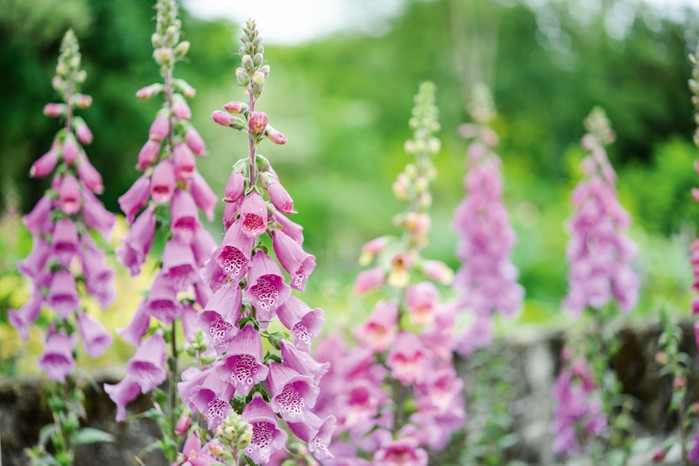
Carol Klein: Some plants are best off spending their entire lives outside from the word go, including biennials such as wallflowers (Erysimum), foxgloves, sweet rocket and sweet Williams. Seed is best sown in late May or in June. The traditional way to sow biennials is in rows in the open ground - the vegetable garden is often a good spot.
- Make a shallow 1.5cm trench with a stick in finely worked soil.
- Sprinkle seed along the row sparingly and cover with soil.
- Firm gently, rake and water with a watering can with a fine rose.
- Thin out seedlings, transplanting the thinnings along the row.
- When the plants are big enough, they can be transferred to their final positions.
Read our detailed guide to choosing and sowing biennials.
Authors
Having studied at Kew Gardens and spent two years at Jerusalem Botanical Gardens in Israel, Aaron Bertelsen is now vegetable gardener and cook at Great Dixter. His book, The Great Dixter Cookbook was published in March 2017.
Carol Klein is a prolific author, nurserywoman, TV presenter and plant specialist. She has written numerous books including ‘Grow Your Own Veg’ which sold more than a quarter of a million copies and was named ‘best-selling gardening book’ for two years running; she writes regularly in the gardening press and for national newspapers.

Niwaki bundle worth £57 when you subscribe
Subscribe to Gardens Illustrated magazine and claim your Niwaki bundle worth £57
*UK only
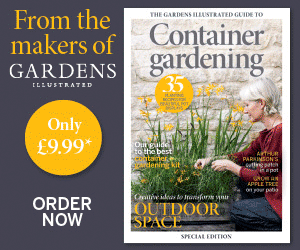
Container Gardening Special Edition
The Gardens Illustrated Guide to Container Gardening.
In this special edition, discover colourful flower combinations and seasonal planting schemes for pots designed by leading plantspeople, and essential know-how for container gardening success. Just £9.99 inc UK p&pBy entering your details, you are agreeing to our terms and conditions and privacy policy. You can unsubscribe at any time.
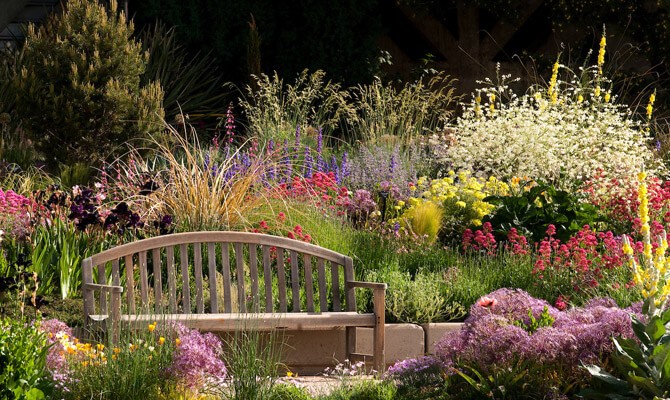
Gardens of the Globe
From botanical wonders in Australia to tranquil havens closer to home in Ireland, let this guide help you to discover some of the most glorious gardens around the world
By entering your details, you are agreeing to our terms and conditions and privacy policy. You can unsubscribe at any time.


